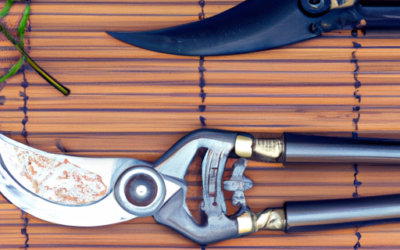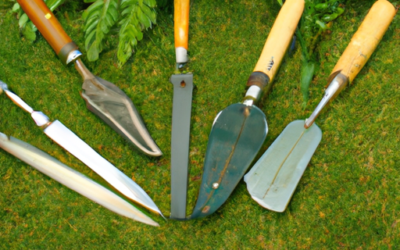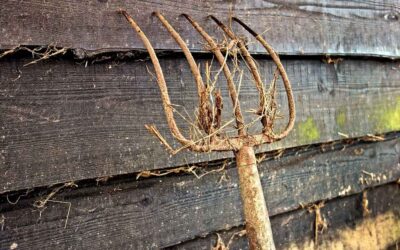If you’re passionate about maintaining a serene and aesthetically pleasing Japanese-style garden, you’ll understand the importance of having the right tools. Among all gardening utensils, the least appreciated yet one of the most crucial is the garden rake. Often overlooked, a reliable, well-made garden rake can ease your gardening tasks, particularly if you’re nurtuing the delicate tranquility associated with Japanese gardens. ‘The Perfect Japanese Garden Rake: A Buyer’s Guide To Choosing The Right One’ presents you an ultimate guide that will assist you in distinguishing the various features, materials, and styles of rakes, helping you find the perfect match according to your specific gardening needs. Read on, and set yourself on a path to maintaining your Japanese garden with precision and confidence.
Understanding the Importance of a Japanese Garden Rake
As you explore an interest in Japanese gardening, you’ll soon realize that traditional tools play a significant role in maintaining the beauty and aesthetics of these unique landscapes. One such tool is the Japanese garden rake, indispensable for its versatile and practical use.
Defining a Japanese Garden Rake
You might wonder what distinguishes a Japanese garden rake from a regular one. Meant especially for Japanese gardens, these rakes are designed with unique features such as sturdy yet flexible tines, a long handle, and often an ergonomic design to keep the comfort of the gardener in mind. These rakes are designed to do more than just gather leaves; they’re part of a centuries-old horticultural tradition.
Role of a Garden Rake in Japanese Gardening
In a Japanese garden, a rake doesn’t just serve the functional role of cleaning up the garden or leveling the soil. Instead, it’s a crucial element in the art of creating Zen-like patterns in gravel or sand, a staple feature in Japanese gardens. It helps in the precise maintenance of grassy areas, and also assists in spreading and combing through the mulch.
Comparison with Regular Rakes
As compared to regular rakes, Japanese garden rakes are carefully crafted for specific roles in the garden. Rather than being general-purpose tools, they’re dedicated instruments for creating, maintaining, and perfecting the layout of a balanced Japanese garden. The precision and dedication put into the creation of these rakes pay homage to the tradition of Japanese gardening.
Important Features to Consider
Before choosing your Japanese garden rake, it’s worth considering several important features.
Type of Material Used
Garden rakes can be made using various materials, such as plastic, metal, and wood. However, traditional Japanese rakes are often made of bamboo or steel to ensure durability and efficiency.
Length of the Handle
Length is a crucial factor to consider while selecting a rake. Longer handles can save you from back strain while maintaining larger Zen gardens. However, if you have a smaller garden space, a shorter handle might suffice.
Width and Number of Tines
The width of the rake and the number of tines it has directly affects the efficiency of the work you can do. For more significant tasks, you may opt for a rake with more tines and broader width, while a narrower rake can be more effective for detail work like creating patterns in the gravel.
Weight of the Rake
Considering the rake’s weight is also important. A heavy rake might do an efficient job, but it can tire you out quickly. On the other hand, a lighter rake could be more comfortable to use but might not be as effective in an extensive garden.
The Shape and Design of the Handle
Japanese garden rakes often have a unique handle design that curves at the end, promoting an ergonomic grip and comfortable gardening sessions.
Types of Japanese Garden Rakes
Steel Rakes
Steel rakes are typically robust and highly durable. They’re perfect for heavy-duty tasks, such as moving large amounts of soil or gravel.
Wooden Rakes
Wooden rakes have an organic feel and look that many gardeners appreciate. They’re lightweight and can be great for small to medium-sized jobs.
Bamboo Rakes
Bamboo rakes combine the advantages of wood and steel rakes. They’re lightweight yet sturdy, and their flexible prongs make them perfect for creating intricate Zen designs in Japanese gardens.
Adjustable Rakes
An adjustable rake can be a versatile choice, with the ability to change the width to suit different tasks within the garden. This can offer the functionality of multiple rakes in one, saving you both space and money.
Top Five Japanese Garden Rake Brands
Sengoku
Japanese tool manufacturer Sengoku is renowned for their high-quality and affordable garden rakes. Made with traditional Japanese craftsmanship, Sengoku garden rakes are built to last and deliver excellent functionality.
Gardena
While being a global brand, Gardena has a range of Japanese garden tools – including rakes – designed with the same attention to detail and quality.
Hida Tool & Craft
At Hida Tool & Craft, quality meets tradition. They offer an excellent selection of traditional Japanese garden rakes crafted from sustainable bamboo and resilient metal.
Garrett Wade
Specializing in exceptional timber and steel tools, Garrett Wade’s Japanese garden rakes are appreciated for their longevity and efficient performance.
Bonsai Outlet
Bonsai Outlet offers rakes developed specifically for the delicate task of tending to bonsai trees. However, their rakes can also be useful for regular Japanese gardens.
Choosing the Right Rake for Your Garden Size
Rakes for Small Gardens
For a small Japanese garden, a compact rake with a short handle and narrow width can be ideal. These rakes are easier to maneuver and store, fitting the scale of a modest garden.
Medium Sized Garden Rakes
For medium-sized gardens, an adjustable rake can be a good option. With the ability to vary the width, you can tailor the tool to fit specific tasks within your garden.
Rakes for Large Gardens
For larger gardens, you might need a rake with a longer handle, broad width, and larger number of tines. Such rakes can cover a larger area quickly and efficiently, helping you maintain a vast garden without extra effort.
Maintenance Tips for Japanese Garden Rakes
Cleaning Tips
Always clean your rake after use to prevent dirt and debris from building up. A quick wash or simple brushing can prevent long-term damage.
Storage Tips
Keep your rake in a dry and clean place. Leaving it out in the elements can speed up wear and tear, shortening the lifespan of your tool.
How to Handle Rust and Wear
If your metal rake starts to rust, use a piece of sandpaper to remove the rust gently. If the tines become worn, consider sharpening them to maintain their effectiveness.
When to Replace the Rake
It’s time to replace your rake when it’s no longer efficient. Cracked or broken tines, a loose handle, or an overall worn-out look are signals that it’s time to invest in a new one.
Safe Raking Techniques to Protect Your Body
Correct Body Posture
Maintain a correct body posture while raking to prevent back or shoulder pain. Stand upright and avoid bending your back too much. Hold the rake close to your body and avoid reaching out too far.
Proper Lifting Method
When lifting heavy piles of leaves or mulch, make sure to lift with your legs and not your back. This simple technique can save you from potential injuries.
Using Gloves and Protective Gear
Wear gloves to protect your hands from blisters and scrapes, sunglasses to shield your eyes from dirt, and boots to protect your feet.
Taking Breaks and Hydrating
Raking can be a taxing task. Make sure to take breaks and hydrate regularly. Remember, gardening should be a serene experience, not a punishing one.
Cost Considerations and Pricing Range
Price Ranges of Japanese Garden Rakes
The cost of a Japanese garden rake can vary greatly, ranging from under $20 to over a few hundred dollars. The price is often reflective of the tool’s quality, durability, and brand reputation.
Reasons for Variation in Prices
The variation in prices can be due to several factors. These include the material of the rake, its size, the brand, uniqueness of design, and whether it’s been handcrafted or mass-produced.
Understanding the Relation between Quality and Price
It’s tempting to go for cheaper options, but remember, you often get what you pay for. An affordable rake might seem like a tempting choice, but it might not be as durable or efficient as a more expensive one. A well-crafted, higher-priced rake can offer superior performance and last much longer, making it a more cost-effective choice in the long run.
Environmentally Friendly Japanese Rake Options
Eco-friendly Manufacturing Techniques
Some Japanese tool manufacturers embrace eco-friendly practices in their production processes, including the use of renewable energy sources and non-toxic manufacturing techniques.
Recyclable Materials
Look for rakes made from recyclable materials, such as metal and wood. These materials can often be recycled at the end of their lifecycle, reducing waste and negative environmental impact.
Sustainability of Wooden and Bamboo Rakes
Wooden and bamboo rakes not only bring a traditional feel but also uphold sustainability. Bamboo, in particular, is a highly renewable resource, making it an excellent eco-friendly choice.
Where to Buy a Quality Japanese Garden Rake
Recommended Online Stores
Online stores offer a wider selection of Japanese garden rakes from various brands. You can compare prices, read reviews, and have your chosen rake delivered to your doorstep.
Physical Stores to Consider
Physical stores, particularly those specializing in garden supplies, can also be a good place to buy a Japanese garden rake. Here, you have the chance to closely inspect the rake and gauge its size, weight, and feel.
How to Make a Purchase Decision Online vs In-person
The choice between buying online or in-person depends on your preference. If you value convenience and selection, online shopping might be the way to go. However, if you prefer to physically check the tool before purchasing, visiting a brick-and-mortar store could be more beneficial.
In conclusion, choosing the perfect Japanese garden rake involves understanding what you need for your specific garden, considering factors like the rake’s material, size, and design, and then selecting a rake that feels comfortable for you to use, fits your budget, and aligns with your environmental values. Happy gardening!








